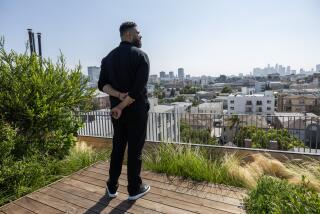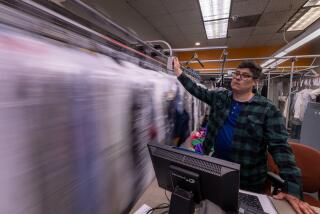Bankers Tour Riot Areas, Hear Appeals
Top banking officials from across Southern California spent Thursday touring areas devastated by last spring’s civil unrest, and most said they were pleasantly surprised at the pace of rebuilding and the enthusiasm of community residents.
However, by the end of the day it remained uncertain whether the good impressions would translate into increased investments in inner-city Los Angeles.
The tour was arranged by Operation Hope, a consortium of Los Angeles banks formed after the riots, the First African Methodist Episcopal Church, and Rebuild L.A.--a trio of institutions that have spearheaded post-riot revitalization efforts.
The purpose was to highlight progress in the city, but also to stimulate a greater response from financial institutions that might be skittish about putting resources into communities with burned-out buildings where tensions remain high.
For some of the banking officials--many of them CEOs or senior officers--it was a first foray into South-Central and other inner-city communities.
“Part of the problem has been ignorance, and that is what we’re trying to turn around here,” said John Bryant, Operation Hope founder and chairman.
So, about 168 bankers and local and state officials climbed aboard five tour buses in First AME’s parking lot.
They surveyed a Thrifty’s drugstore rebuilt at Crenshaw Boulevard and Rodeo Road, a new Toyota job training center on Crenshaw and a pharmacy at 48th Street and Western Avenue, rebuilt with a loan package arranged by Operation Hope.
As the buses traveled along Central Avenue to Compton, Bryant urged the officials in his group to study the residential communities.
“This is the heart of Compton, a place they say is the worst place in America, but (it is) just like any suburban community you’d see,” he said, gesturing toward the neat houses with tidy yards. “There is pride in ownership here. If we can start doing that in our commercial districts . . . we can turn this thing around.”
While the bankers were mostly enthusiastic, their presence garnered mixed reviews.
One woman filling the gas tank of her car at Manchester and Western avenues in South-Central praised the group for taking the time to come and see her community firsthand.
“If these people can offer some help, then we ought to encourage that and, as a community, accept it,” said Regina Foster, 54.
However, a man shopping for groceries across the street at Boy’s Market called the tour “just a show.”
But one banker said financial institutions no longer can get away with neglecting inner cities.
“There is a lot of pressure to lend in inner cities now and there is stepped up reviewing of banks to ensure they don’t discriminate,” said Gary Wehrle, president and chief executive officer of Foothill Thrift and Loan in Agoura Hills.
Bernard Kinsey, an RLA co-chairman, said the tour will produce tangible results. “We’ve already cut a few deals,” he said. He also defended his group against persistent criticism that rebuilding has lagged.
According to a survey completed by the city’s Department of Building and Safety, of 1,120 buildings damaged during the riots, 549 have been repaired or rebuilt, while 104 are under construction.
But the survey also reveals that South-Central--the area hardest hit by destruction--lags behind Koreatown and Hollywood, with about a third of buildings repaired.
Kinsey said he is fed up with a constant stream of negative publicity about recovery efforts--a complaint echoed by U.S. Commerce Secretary Ronald Brown, who met with about 80 of the bankers at a Westwood Hotel after the tour.
Brown also told the bankers that the Clinton Administration is seeking to “create a new kind of partnership” with financial institutions and the private sector to foster investment in places such as South-Central.
More to Read
Sign up for Essential California
The most important California stories and recommendations in your inbox every morning.
You may occasionally receive promotional content from the Los Angeles Times.











